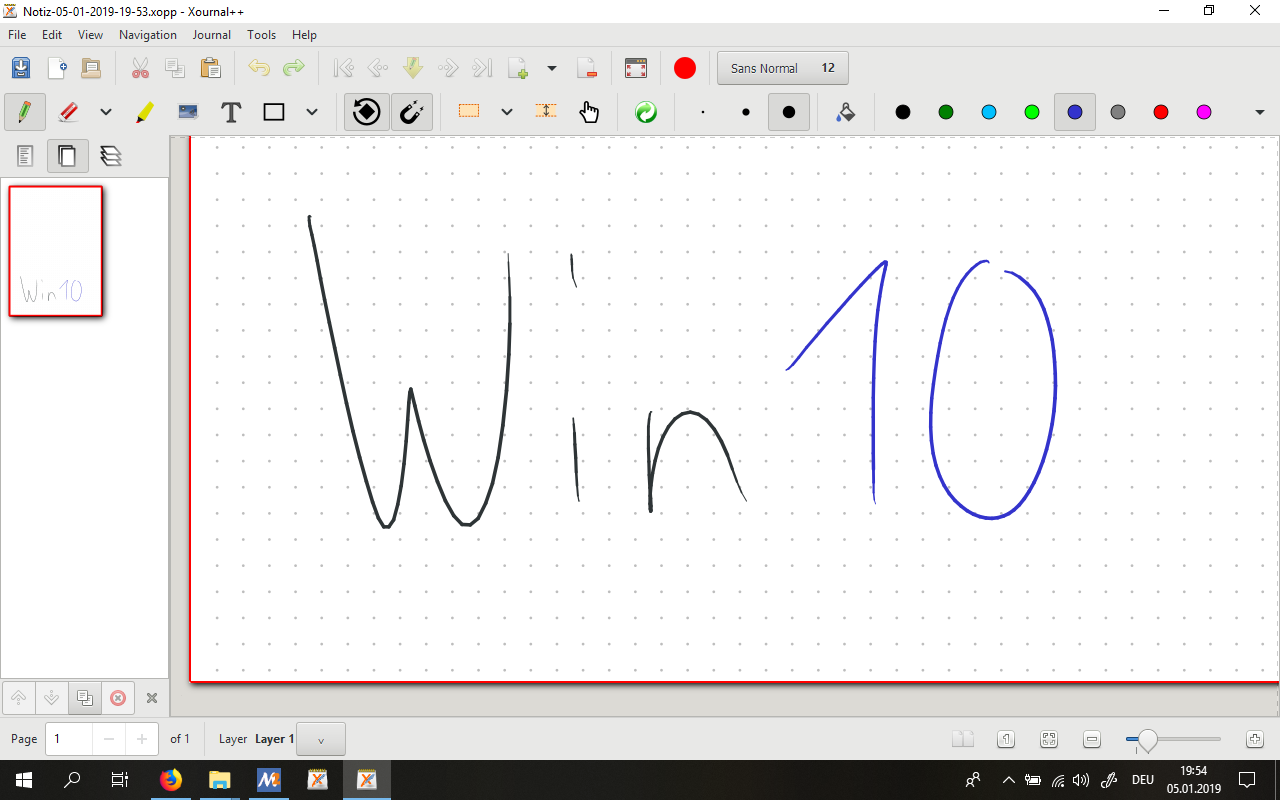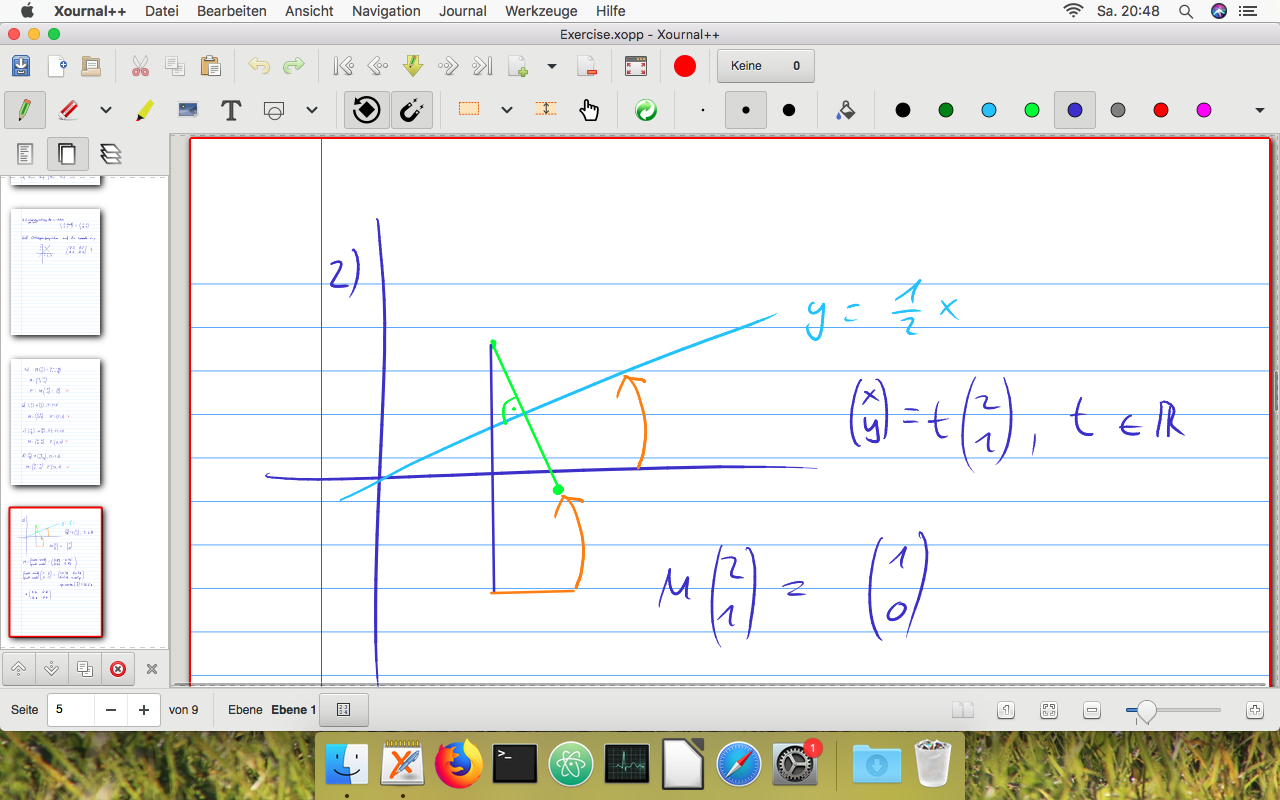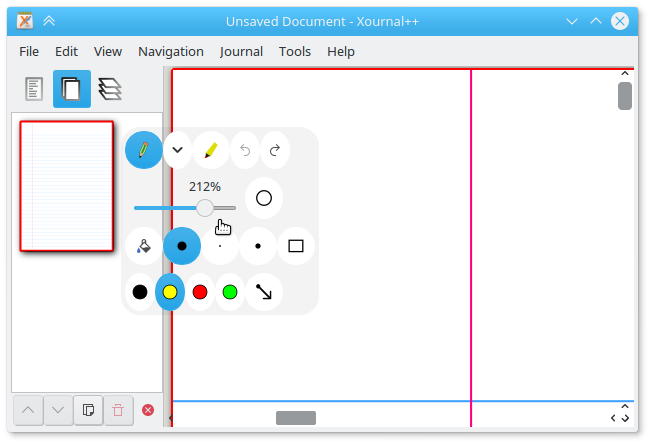For some required changes to our code base we can currently not admit any pull requests. We are very thankful to anybody that is willing to work on Xournal++ and hope that this inconvenience will not deter you from helping us out. The last PR that will be merged before we do the extensive changes to the code base is #1430, which will then be followed by one last release before our PR freeze. Afterwards we will do the necessary work to ensure a continued solid development of Xournal++. Once we are finished we will remove this note and welcome all your PRs with open hands! Thanks for your support!

|
Recently we revisited the settings dialog to improve the feeling and usability. While doing that we also added better descriptions, for which we require new translations. Partial translations, which need to be updated:
Full translations for all languages not mentioned previously except:
If you would like to help us imporve the localization of Xournal++ take a look at our Crowdin project. If you are interested in translating a new language, contact us on Gitter or create a new issue and we will unlock the language on Crowdin. Thanks in advance! |
Xournal++ is a hand note taking software written in C++ with the target of flexibility, functionality and speed. Stroke recognizer and other parts are based on Xournal Code, which you can find at sourceforge
Xournal++ features:
- Support for Pen preassure, e.g. Wacom Tablet
- Support for annotating PDFs
- Fill shape functionality
- PDF Export (with and without paper style)
- PNG Export (with and without transparent background)
- Allow to map different tools / colors etc. to stylus buttons / mouse buttons
- Sidebar with Page Previews with advanced page sorting, PDF Bookmarks and Layers (can be individually hidden, editing layer can be selected)
- enhanced support for image insertion
- Eraser with multiple configurations
- Significantly reduced memory usage and code to detect memory leaks compared to Xournal
- LaTeX support (requires a working LaTeX install)
- bug reporting, autosave, and auto backup tools
- Customizeable toolbar, with multiple configurations, e.g. to optimize toolbar for portrait / landscape
- Page Template definitions
- Shape drawing (line, arrow, circle, rect)
- Shape resizing and rotation
- Rotation snapping every 45 degrees
- Rect snapping to grid
- Audio recording and playback alongside with handwritten notes
- Multi Language Support, Like English, German (Deutsch), Italian (Italiano)...
- Plugins using LUA Scripting

|

|

| |

|

|
Sometimes a feature is added that might not be rock solid, or the developers aren't sure it is useful. Try these out and give us some feedback.
Here are a few under development that you can play with now.
 Assign a mouse button or stylus button to bring up a toolbox of toolbars right under the cursor. You can also modify what is in the toolbox through the usual View->Toolbars->Customize although it won't appear unless you've assigned a button in preferences: mouse or stylus ( or selected a toolbar configuration that uses it).
Assign a mouse button or stylus button to bring up a toolbox of toolbars right under the cursor. You can also modify what is in the toolbox through the usual View->Toolbars->Customize although it won't appear unless you've assigned a button in preferences: mouse or stylus ( or selected a toolbar configuration that uses it).
-
Keep your eyes out for other experimental features in preferences as seen here:
DrawingTools: When drawing a box, circle etc simulate ctrl or shift modifiers by the initial direction you move the mouse.
Action on Tool Tap: Allow a brief tap on the screen to bring up the floating toolbox and/or select an object. May work with pen and highlighter only.

- Go to
Edit > Preferences > Audio Recordingand set theAudio Folderas well as the appropriateInput DeviceandOutput Device.
If you need to edit the recording audio gain, take a look at the preferences tab mentioned above.
Please test this new feature in advance before relying on it to work. It could contain bugs specific to some hard-/software, which we have not yet found.
Just press the red button to start/stop recording and draw strokes using the Pen tool. The recording is associated with the drawn strokes and typed text while it is running.
Use the Play Object tool to click on a stroke or text node and listen to the corresponding audio. You can pause and stop the playback of the audio with the buttons next to the recording button in the toolbar.
sudo add-apt-repository ppa:andreasbutti/xournalpp-master
sudo apt update
sudo apt install xournalppOn openSUSE Tumbleweed, the released version of xournalpp is available from the main repository:
sudo zypper in xournalppFor openSUSE Leap 15.0 and earlier, use the install link from X11:Utilities.
For all versions of openSUSE, bleeding edge packages synced to xournalpp git master on a weekly basis are available from home:badshah400:Staging.
The most recent stable release is available in the [extra] repository.
To build the latest state of the master branch yourself, use this AUR package.
We officially support a FlatHub release, which can be installed with
flatpak install flathub com.github.xournalpp.xournalppNote that for Xournal++ to work properly, you must have at least one GTK theme and one icon theme installed on Flatpak.
The Flatpak manifest can be found at the Xournal++ Flatpak packaging repository, and all Flatpak-related packaging issues should be reported there.
The windows Version has a Bug: Please start Xournal++, touch with the Pen, Quit Xournal++ and start again. Then Pen input will be working, until you restart Windows. #659
https://github.com/xournalpp/xournalpp/releases
Xournal++ will be deliverd with a patched GTK. Else pressure sensitivity is not working on Mac #569. (GTK-Issue)
https://github.com/xournalpp/xournalpp/releases
The fileformat *.xopp is an XML which is .gz compressed. PDFs are not embedded into the file, so if the PDF is deleted, the background is lost. *.xopp is basically the same fileformat as *.xoj, which is used by Xournal. Therefor Xournal++ reads *.xoj files, and can also export *.xoj. On exporting to *.xoj all Xournal++ specific Extension are lost, like addtional Background types.
*.xopp can theoretically be read by Xournal, as long as you do not use any new feature, Xournal does not open files at all if there are new attributes or unknown values, because of this Xournal++ will add the extension .xopp to all saved files.
All new files will be saved as *.xopp, if an *.xoj file is opened which was created by Xournal, the Save-As dialog will be displayed on save. If the *.xoj file was by Xournal++ created, Xournal++ overwrite the file on save, and does not change the extension.
We are currently introducing a new file format that can efficiently store attached PDF files and other attachments internally. We will still allow for attachments that are linked to external files. Please refer to #937 for futher details.
For developping new features, write a Ticket, so others know what you are doing. For development create a fork, and use the master as base. Create a Pull request for each fix. Do not create big pull requests, as long as you don't break anything features also can be merged, even if they are not 100% finished.
See GitHub:xournalpp for current development. You can also join our Gitter channel via the badge on top.
Also take a look at our Coding Conventions
The code documentation is generated using Doxygen.
In order to generate the documentation yourself, first install Doxygen and graphviz, i.e.
sudo apt install doxygen
sudo apt install graphvizon Debian or Ubuntu. Finally, type in doxygen in the root directory of the repository.
The documentation can be found in doc/html and doc/latex. Conveniently display the
documentation with python3 -m http.server 8000 and visit the shown URL to view the
documentation.

